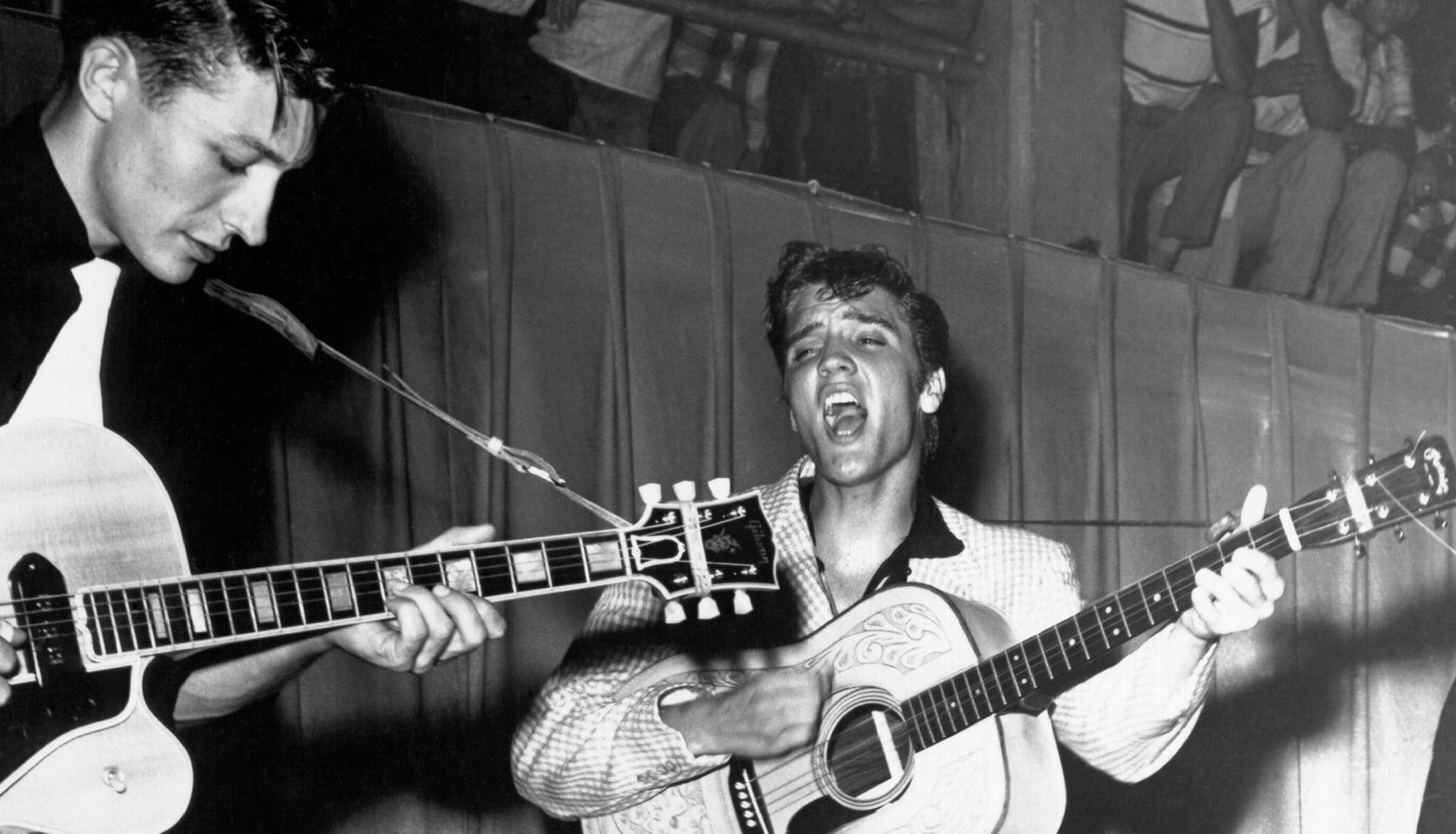“Elvis started beating the snot out of his guitar, and Bill grabbed his bass and started playing. Sam poked his head out of the door and said, ‘What are you guys doing? That sounds pretty good’”: Scotty Moore details the legendary That’s All Right session
Speaking to GP in 2009, Elvis Presley's original six-string sideman said the near-mythical session began somewhat inauspiciously

One of the best scenes in the brilliant 2007 rock biopic sendup, Walk Hard: The Dewey Cox Story, involves the titular character happening upon the titular song.
In the midst of a fruitless recording session, Cox begins playing his original tune, Walk Hard. When his band protests, saying they don't know the song, he says, dramatically, “you just follow me.” From there comes a montage of Cox's meteoric rise to fame.
The scene is a perfect parody of similar ones found in then-recent Ray Charles and Johnny Cash biopics, but it's also based on the near-mythical session that produced Elvis Presley's first hit, a cover of Arthur Crudup's That's All Right.
Speaking to Guitar Player in 2009, Elvis's original six-string sideman, Scotty Moore, detailed the session, which began inauspiciously.
He and bassist Bill Black were both members of a larger, six-piece country band, Doug Poindexter’s Starlite Wranglers, which had made a record for Sam Phillips' Sun Records label in 1954.
Acting on a tip from his secretary, Phillips set up an initial, informal jam session with Presley, Moore, and Black, which went well enough that the trio soon set up a more formal recording session at Phillips' Sun Studio.
“We went in there about six at night, and worked on stuff until at least 9:00 or 9:30,” Moore recalled to GP. “Sam got some stuff he could use, but everything was slow – pop ballads.
All the latest guitar news, interviews, lessons, reviews, deals and more, direct to your inbox!
“Bill was sitting down on his bass, and I had already laid the guitar down in the case. We were getting ready to call it off, because, you know, we had to work the next day. The door to the control room was open about half way, and Elvis just started beating the snot out of his guitar – acting the fool and singing – and Bill grabbed his bass and started playing along with him.
“Sam poked his head out of the door – this was before mixing consoles had a talkback button – and he said, ‘What are you guys doing? That sounds pretty good – why don’t you keep doing it.’
“So,” he continued, “I got my guitar, ran through it a couple of times, and that was it. That was the beginning of, how do you say it – all hell breaking loose!”

Jackson is an Associate Editor at GuitarWorld.com and GuitarPlayer.com. He’s been writing and editing stories about new gear, technique and guitar-driven music both old and new since 2014, and has also written extensively on the same topics for Guitar Player. Elsewhere, his album reviews and essays have appeared in Louder and Unrecorded. Though open to music of all kinds, his greatest love has always been indie, and everything that falls under its massive umbrella. To that end, you can find him on Twitter crowing about whatever great new guitar band you need to drop everything to hear right now.

